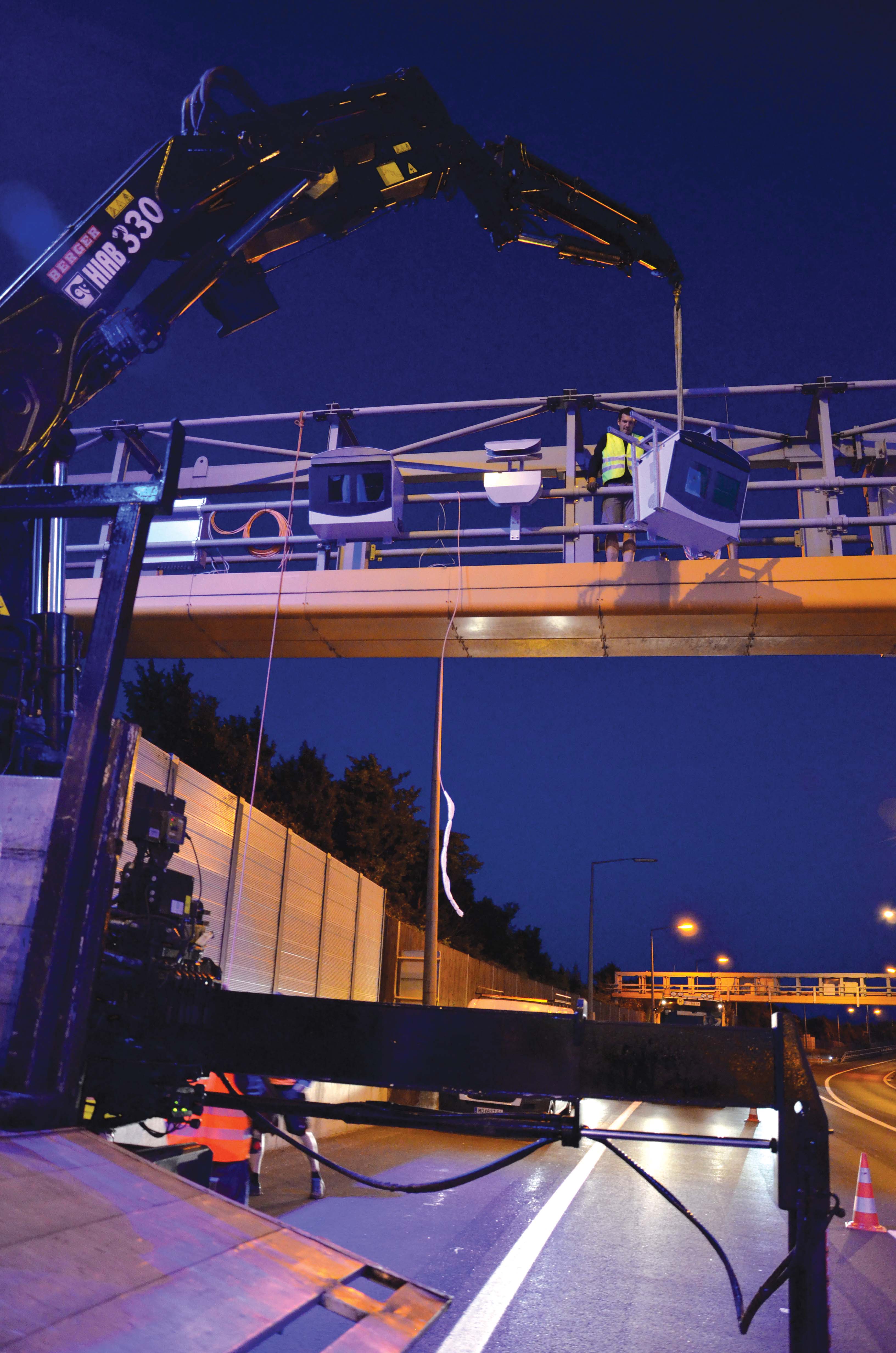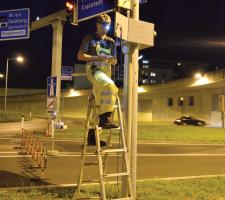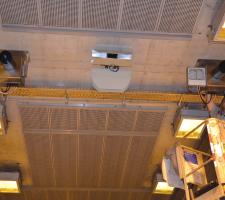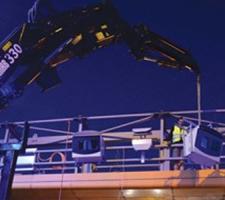
Efficient speed enforcement in the most highly frequented tunnel in Austria on the A7 near Linz.
The Bindermichl-Niedernhart tunnel complex on Austrian highway A7 connects the major east/west A1 route from Vienna/ Bratislava to Munich/Salzburg with the A7/ E55 running south from Prague in the Czech Republic. This happens right in the middle of the city of Linz, Austria. It is Austria’s most heavily used tunnel with more than 200,000 vehicles passing through it every day and this includes many heavy trucks on international journeys as well as regular city commuters creating rush hour congestion.
Against that background it is perhaps not surprising that the tunnel does not have the best safety record with more than 80 accidents per year and it has been shown that the most frequent cause of fatal accidents is excess speeding. In addition to the injuries and fatalities, the accidents cause frequent congestion and high costs.
The tunnel is operated by
Section speed control was considered to be particularly effective in this situation as the speed is monitored over a longer stretch of road meaning potential violators cannot simply slow down as they pass the cameras to escape prosecution. Instead, drivers have to keep an average speed below the permitted maximum over the complete length of the controlled section. ASFINAG believes this method of monitoring speed violations is a fairer and more sustainable way while also contributing to a more homogenous speed level. That in turn increases road capacity, especially during periods of high traffic density, while reducing peak traffic congestions due to the more homogenous traffic flows and exhaust emissions are also reduced.
Having considered different vendors for this kind of technology, ASFINAG opted for a TraffiSection system from
The two organisations had previously worked together on a section control project in the Austrian Plabutsch tunnel near Graz – Europe’s longest road tunnel. For the installation in the Bindermichl-Niedernhart tunnel, the system had to cater for a number of very complex requirements. According to Jenoptik, in providing an appropriate solution the system ended up becoming the most sophisticated and challenging section control project worldwide to date.
Complex situation
In order to effectively monitor speed across the entire tunnel network, which comprises several tunnels with 12 entry and exit points, ASFINAG was looking for a fully automatic multi-section speed control system. The proposed system needed to be able to process the extremely high number of passing vehicles travelling on all of the 15 possible sections through a tunnel network that covers more than 7km of roads. The new system also had to connect to the existing variable message signs (used for dynamic speed regulation) including a permanent video proof of the current speed indication at the entry point of time. It had to operate in FreeFlow mode, so that speed violations could easily be processed via regular enforcement channels without needing to stop vehicles at the exits of the tunnel networks to issue tickets to errant drivers.To do this effectively, the installation needed to be able to differentiate between motorcycles, private cars, private cars with trailers, trucks and buses in order to apply the applicable speed limit to each class of vehicle being monitored.
Furthermore, as Austria is often considered as Europe’s crossroads, offenders are likely to have travelled from or to a number of other countries, so the evidence gathered had to meet the requirements of several countries if the enforcement was to be effective.
To fulfil these requirements, Jenoptik developed a system based on multiple laser scanner sensors. The complete installation includes various technological components of sensors and VMS cameras which are connected to the system’s data processing unit by a secure fibre optic network.
Six entry gates were set up in order to register the vehicles entering the controlled section tunnel network. At each, laser scanner units with classification and triggering module monitor two lanes at the same time.
These scan the arriving traffic and register each vehicle’s entry time, speed and category.
In addition, a CCTV video camera installed at each entry point monitors the variable speed signs and creates a video proof of the vehicle’s current speed.
On entering the tunnel lane cameras capture each vehicle’s number plate which is illuminated by an infrared flash light – this was chosen as it is invisible to the human eye and therefore does not distract drivers. This data is combined with the 3D profile from the scanner analysis into a single xml-encrypted data entry and forwarded to the data processing unit where it is stored until the vehicle leaves the controlled section.
On leaving the controlled section at any one of several exit points, a similar laser scanner system with camera and infrared flash light captures the exit time and sends that record to the data processing unit. By matching the corresponding entry and exit information for each vehicle, its route through the complex can be ascertained and the average speed calculated. This is automatically cross-referenced with the current speed limit for the class of vehicle. If the vehicle has not violated the speed limit, the record is automatically deleted immediately and, due to the encryption, it is not possible to access any vehicle information unless there has been a speed violation.
However, if the average speed has been too high, the speed measurement data will be completed at the exit point with a photograph of the driver.
Should the data processing unit detect a current speed violation for one of the 15 defined sections by matching entry and exit record of one vehicle, the information is forwarded to the relevant one of the eight driver face recognition cameras so that an appropriate picture of the driver can be taken in order that the violation can be processed internationally. On this final violation image, the driver’s face needs to be recognisable – a requirement that makes it necessary to work with a regular flash in open air as the vehicle exits the tunnel complex. This camera is installed a few metres behind the exit gate, so that the violation can be calculated before the driver passes the camera – making it possible that only violators are photographed.
All the various strands of information and evidence of an offending driver and their vehicle is combined in the data processing unit and forwarded to the police in charge of the prosecution. The evidence file includes images from the entry and exit points, the calculated average speed through the defined route, encrypted numberplate information, vehicle category, video proof of the current speed indication at the entry point of time and the driver’s image from the exit camera.
As more than 200,000 vehicles pass through the section every day and each has to be ‘timed in’ and ‘timed out’, the data processing unit needs to provide exceptional capacity and flexibility.
Now, six weeks into the pre-operation, evidence provided by the TraffiSection installations has already demonstrated the effectiveness of the system. These include improved traffic flow and a reduction in road speeds as well as fewer accidents involving injuries and fatalities. Within this short period speed violations have been reduced by 80% - from approximately 100 per day to fewer than 20. Senior project manager at Jenoptik Traffic Solutions Uwe Urban said: “Our section speed control solutions proved to be especially effective for monitoring average speed over longer stretches of road even in very complex conditions with multiple sections. TraffiSection supports the authorities in efficiently providing for safer road conditions in tunnels in Austria.”















